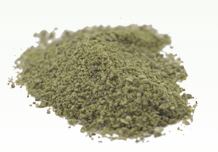"The study looked at the consumption of seaweed supplying iodine in a natural form,” Paul Altaffer, chief innovation officer of RFI Ingredients told NutraIngredients-USA. RFI, based in Blauvelt, New York, supplies the ingredient in the US market. The ingredient is harvested and manufactured by Seagreens, based in Scotland.
“The absorption of iodine in a natural matrix is slower, more sustained and bioavailable for a longer period of time,” he said. The synthetic form of iodine used in table salt is rapidly absorbed, Altaffer said, and just as rapidly excreted.
Iodine insufficiency
Iodine insufficiency has become a matter of public health concern in the UK, the US and other developed countries in recent years. According to the National Health and Nutrition Examination Surveys (NHANES), the US dietary iodine intake dropped by more than 50% over the last 40 years. The drop has likely been the result of the removal of iodate conditioners in store-bought breads, widely-publicized recommendations for reduced salt and egg intake for blood pressure and cholesterol control, the increasing use of non-iodized salt in manufactured or premade convenience foods, decreased iodine supplementation of cattle feed, poor education about the medical necessity of using iodized salt, and reduction in the number of meals made at home. Certain groups are particularly at risk, such as pregnant women. A diet insufficient in iodine can lead to health issues including tiredness, fatigue, dry hair, skin and nails, muscle fatigue, and long-term health problems such as underactive thyroid.
Study details
The researchers recruited healthy non-pregnant women of childbearing age, self-reporting low dairy product and seafood consumption, with no history of thyroid or gastrointestinal disease. The women were supplement with Seagreens, an encapsulated, organic wild-harvested form of kelp commercially available encapsulated edible seaweed (Ascophyllum nodosum species) with specified iodine levels. Seagreens used in this study was of the species Ascophyllum nodosum, which has iodine levels typically around 700 μg/g.
“The seaweed was palatable and acceptable to consumers as a whole food or as a food ingredient and effective as a source of iodine in an iodine-insufficient population. In conclusion, seaweed inclusion in staple foods would serve as an alternative to fortification of salt or other foods with KI,” the researchers concluded.
Ingredient quality

As with any naturally derived ingredient, harvesting and processing conditions play a big role in the quality on the shelf. Seagreens has addressed these concerns, Altaffer said.
“The technology has been patented around how the seaweed is harvested and processed. The product is harvested with a dedicated vessel, and it never touches the ground,” he said.
In the US market, Seagreens is directed exclusively at supplements for the moment, Altaffer said. The ingredient does not have GRAS status, though working on a submission using data from the European market, where the ingredient has been judged as not needed novel food status, is a project for the future, he said.
Source: British Journal of Nutrition
2014 Jul 9:1-9. [Epub ahead of print]
"Low level seaweed supplementation improves iodine status in iodine-insufficient women"
Authors: Combet E, Ma ZF, et al
